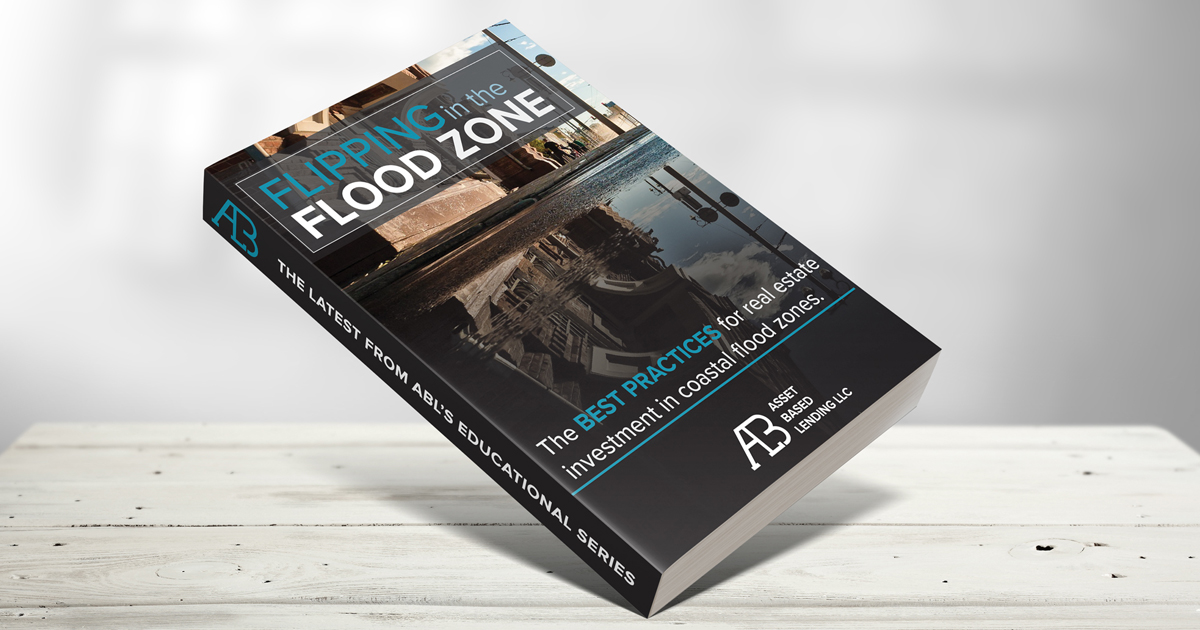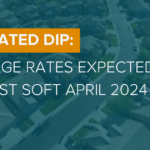Abstract
This white paper will provide real estate investors with an in-depth exploration of the best practices for investing in flood zones. Readers will learn how to identify the floodplain a property is located in as well as understand the various classifications of flood zones. Additionally, the reader can discover the legal requirements and restrictions associated with construction in a floodplain.
The reader will learn the factors that make a material suitable for building in a flood zone as well as a summary of the most commonly used materials for foundations, insulation, and walls. Finally, the reader will understand the difference between wet and dry flood-proofing methods as well as what techniques for preventing flood damage fall under each category.
The purpose of this whitepaper is to introduce investors to the specifics of flood zone construction and help interested parties understand the specific requirements.
[su_row][su_column size=”2/3″][su_note note_color=”#fefefe” text_color=”#4b4b4b” radius=”0″]

Download This Whitepaper As A PDF
Flipping In The Flood Zone
Best practices for real estate investing in coastal flood zones.
Download The Free Whitepaper
[/su_note][/su_column][/su_row]
[toc]
Introduction
[su_row][su_column]
So far in 2017, there have been two historic storms in the United States that caused unprecedented flooding: Hurricane Harvey in Texas and Hurricane Irma in Florida. These storms come just five years after Hurricane Sandy devastated the northeast coast, hitting the Jersey Shore especially hard. New Jersey is still recovering from the hit it took in 2012, and it is likely that the impacts of Harvey and Irma will be felt for years to come.
With as much as 25% of the Florida Keys destroyed (Boston.com) and $14 billion dollars in damage as a result of Irma (Slate), there is an opportunity for investors to step in and not only help with recovery but also make a sizable profit.
After Tropical Storm Allison hit Houston in 2001, one investor bought homes for up to 40% less than their original value, repaired them for around 15%, and sold them for full value a year later (Reuters). For many homeowners who lived through Allison, Ike, and now Harvey, the frustration of rebuilding after each successive flood has convinced them it is time to sell – and for a highly discounted rate.
Just as Houston is a bustling and growing metropolis despite its flood risk, high-demand areas like the Florida Keys and the Jersey Shore will not lose their desirability because of the
[/su_column][su_column]
increased flooding in recent years. However, many existing homes are not built to withstand major flood events, providing an opportunity for investors to buy cheap, build durable houses, and sell for full price.
For investors, building in a flood zone can be tricky: there are additional legal steps, construction requirements, and building considerations that can add time and expense to the flipping process. This paper will help you figure out what flood zone your property is in, what that means, and how to proceed with your investment accordingly. Additionally, it will provide you with information on how to access the technical guides from FEMA and other organizations that determine the minimum requirements and best practices for building in flood zones.
If these flood trends continue in coastal areas – and with a steadily rising sea level, that is likely – it is important for real estate professionals to understand how to build responsibly in flood zone areas. No matter how often these locations flood, waterfront views will always be desirable. By building houses that will stand strong when water levels rise, you can tap into this demand while helping to rebuild low-elevation areas that have been wiped out by historic storms.
[/su_column][/su_row]
Identifying Floodplains
Is your property in a floodplain?
[su_row][su_column]
To determine whether or not your property is in a floodplain, the Federal Emergency Management Agency (FEMA) uses flood maps. These maps are used not only to determine the value of a home and the risk of flooding, but also to determine flood insurance rates.
As a real estate investor, understanding whether or not your property is in a floodplain is important for a number of reasons:
1. It will impact the value of your property.
2. It should inform your renovation decisions.
3. It will educate you about the riskiness of your investment.
If you are buying a flood-damaged house because the owners cannot afford to repair it, then you likely already know you are in a flood zone; however, you may not know which zone you are in. However, just because a home did not flood recently does not mean it is outside of the flood zone, so it is important to check these flood maps before you proceed.
[/su_column][su_column][su_note note_color=”#508e81″ text_color=”#ffffff” radius=”0″]
Accessing Flood Maps
You can use FEMA’s Flood Map Service Center (https://msc.fema.gov/portal) to find out where your property falls on the maps.
All you need to do is enter the address (i.e. Street Address, Town, State, Zip Code) of the property you are interested in and it will show you the boundaries of your flood map and allow you to view or download the map that contains your property address.
[/su_note][/su_column][/su_row]
Interpreting Your Flood Map
The greatest risk floodplain is Zone V. This zone is unique to coastal areas; if your property is here, it means that each year the home has a greater than 1% risk of annual flooding.
If you are in the Special Flood Hazard Area (Zones A, AE, AH, AO, AR, and A99), you are located in an area with a 1% annual risk of flooding. This is also called the 100-year floodplain (NJAFM).
Homes in Zone X (shaded) have an annual flood risk between 0.2% and 1%. This is considered the 500-year floodplain. The table below has a summary of these and other floodplains.
| ZONE | DESCRIPTION |
| C and X | Minimal risk. 0.2%-1% chance of annual flood. Flood insurance available for NFIP communities. |
| B and X | Moderate risk. 0.2%-1% chance of annual flood. Flood insurance available for NFIP communities. |
| A, AE, AH, AO, AR, and A99 | High risk. 1% or greater chance of annual flood. Flood insurance required for NFIP communities. |
| V, VE, V1-30 | High risk – coastal areas. Greater than 1% chance of annual flood; additional hazard from storm waves. Flood insurance required for NFIP communities. |
| D | Undetermined risk. No flood hazard analysis conducted. Flood insurance not required for NFIP communities. |
These flood zone demarcations are used to determine your insurance rates, but you can also use them to determine the flood risk for your investment property. Keep in mind that floods don’t follow maps: even if you are outside of the 100-year or 500-year floodplain, your investment property could be at risk for flooding in a major storm.
To do more in depth research, look into flooding from past years and see how close the waters came to your area. The hurricanes that hit Texas and Florida this year resulted in massive flooding that destroyed homes that had never flooded before – and were not considered to be in high risk areas.
Financial Considerations
[su_row][su_column]
Depending on your exit strategy for your investment property, the financial impact of flipping in a flood zone could affect different things. If you are refinancing and maintaining your property as a rental, consider the risks of not taking steps to prevent floodwaters from devastating your property. Even if you are located in a 500-year floodplain, you may want to take some inexpensive precautions to prevent flood damage, just in case.
If you plan on selling as soon as the rehab is finished, it is likely that you will never have to deal with the consequences of a major flood yourself. However, buyers are wary of buying homes in flood zones, especially if there was a major flood recently. The drop in prices of coastal homes after
[/su_column][su_column]
severe flooding is likely what made the property’s price attractive in the first place. Unfortunately, this also means that your ultimate selling price will likely take a hit compared to the pre-flood value.
One way to combat this price reduction is to build responsibly, regardless of your exit strategy. If you believe there is a risk your property will flood, you should take that into account while building. Additionally, prospective homebuyers who wish to obtain a mortgage must have flood insurance in order to do so, so if your fix and flip property does not meet the minimum FEMA requirements, you will have a hard time finding buyers who are able and willing to purchase the home.[/su_column][/su_row]
Legal Requirements
[su_note note_color=”#f6f6f6″ text_color=”#4e4e4e” radius=”0″]The National Flood Insurance Program (NFIP) requires that certain minimum requirements be met in order for homes to qualify for flood programs; planning boards also typically require that builders comply with these requirements in order to gain necessary construction permits.[/su_note]
Elevation and Flood Vents
Living spaces must be located at least one foot above the Base Flood Elevation (BFE) in the city and one foot above the BFE in the county. Walls cannot withstand the pressure of severe flooding, so flood waters must be allowed to flow under the building. If there are no flood vents, then the building is at risk of collapse in the event of a flood.
Builders need to acquire an Elevation Certificate to confirm that they have complied with this restriction and to prove that servicing equipment such as the HVAC system and water heaters are located above the BFE.
For homes in Zones A and X, homeowners can opt to meet the elevation requirement by filling the site with fill instead of elevating the structure. However, FEMA does not recommend this practice in Coastal A zones because fill is especially susceptible to erosion.
Accessory Structures
Features like a shed, detached garage, or storage must be anchored. Accessory structures cannot be designed for habitation, make up more than 10% of the property’s value, or contain appliances of any kind. If any of those statements apply to the structure, it must be elevated to at least one foot above the BFE.
Special Requirements for Substantial Damage or Substantial Improvement
If you are flipping a home with substantial damage or implementing substantial improvements to an existing home, you must provide cost estimate of the repairs before you get permits.
[su_row][su_column][su_note note_color=”#508e81″ text_color=”#ffffff” radius=”0″]
Substantial Damage:
Damage where the cost to restore the building to its pre-damage condition equals or exceeds 50 percent of the building’s market value before the damage occurred.
Substantial Improvement:
Reconstruction, Rehabilitation, addition, or improvement of a building where the cost equals or exceeds 50 percent of the building’s pre-improvement market value.[/su_note][/su_column][su_column]
Depending on the cost of the renovation, the age of the home, and the location of the property, you may have varying degrees of required compliance with FEMA guidelines. For more information on your specific project, contact your local FEMA office.
FEMA regional contact info:
https://www.fema.gov/regional-contact-information
[/su_column][/su_row]
Building to Last
Materials that Resist Damage
The first step to constructing a home that will withstand a flood is to choose materials that are resilient. The chart below summarizes the characteristics of acceptable and unacceptable materials in flood zones:
| CLASS | DESCRIPTION | |
| 1 | Highly resistant to damage from floodwaters and moving waters; can endure wetting and drying; may be cleaned of pollutants. Permitted for partially enclosed or outside uses and nearly unmitigated flood exposure. | |
| 2 | Resistant to damage from floodwaters, not immune to moving water; can endure wetting and drying; may be cleaned of pollutants. May be exposed to floodwaters in interior spaces. | |
| 3 | Not resistant to floodwater damage. May endure wetting and drying but cannot be cleaned of pollutants. | |
| 4 | Not resistant to water damage. Cannot endure wetting and drying. Suited for dry spaces with minimal water vapor. | |
| 5 | Not resistant to water damage or moisture damage. Cannot endure wetting and drying. Suited for completely dry spaces. |
Below are some of the most common materials used for construction in flood zones. FEMA also provides an extensive list of common building materials with their class ranking; anything ranked in class 1 or 2 is acceptable below the BFE while materials ranked 3, 4, or 5 are unacceptable.
[su_row][su_column size=”1/3″]Concrete Foundations
Builders can utilize a crawlspace foundation to raise the home. This involves a system of beams that are surrounded by concrete walls. To prevent collapse, there must be a minimum of two openings in the concrete walls to allow water to pass through (FEMA).Another popular technique is to build a pile foundation. Concrete piles are driven into the ground and used to support the home (Make It Right).[/su_column][su_column size=”1/3″]Engineering Bricks or Cement/Lime Render Walls
These materials have good water penetration, drying ability, and retention of pre-flood integrity characteristics and are therefore good choices for the exterior of a home in a flood zone (NBS).[/su_column][su_column size=”1/3″]Plastic Insulation
Closed cell foam is flood-resistant and can be used below the BFE. While this would be the most enduring material to use everywhere in a home in a flood zone, it is more expensive than open cell alternatives. FEMA allows the use of open cell insulation above the BFE and it can be easily removed if flooding does occur (Icynene).[/su_column][/su_row]
Flood-Proofing: Dry and Wet Methods
True to their names, dry flood-proofing keeps water out while wet flood-proofing allows water to flow through the structure. Here are some factors to keep in mind when deciding how to flood-proof your investment property (ODPEM):
- Flood level: Areas with shallower floods are easier to flood-proof.
- Water velocity: Slow-moving water poses less of a structural risk.
- Flood frequency and duration: Frequent flooding makes it more difficult to keep water out
[su_row][su_column]
Dry Flood-Proofing
Elevating your structure is considered a dry floodproofing method, whether it be on fill, piers, or bearing walls. You can also dry flood-proof by sealing the lower levels of the structure, but this also introduces a high risk of structural damage in the case of severe floods.
A short-term dry flood-proofing method is sandbagging; by placing sandbags along the exterior of the home to keep water out of cracks in doors, windows, and walls.
Successful dry flood-proofing means minimal costs post-flood and a fast recovery time; however, it is more expensive to implement and if the flood level rises above the level of flood-proofing, the home can still flood.
[/su_column][su_column]
Wet Flood-Proofing
This method is employed directly before a flood is expected; the purpose is to minimize damage from floodwaters. Valuable items are moved to higher floors, sewer and water systems are sealed off, heating and A/C ducts are taped along the bottom, and gas appliances and electrical outlets are moved or adjusted.
Additionally, homeowners must ensure that a door or window is open to let water in so that the walls are not damaged and that all utilities are turned off.[/su_column][/su_row]
Conclusion
Even with the risks of coastal flooding, the desirability of beachfront houses will never fade. Metropolitan areas with high flood risks will continue to thrive and the architecture of these areas will gradually shift. When poorly constructed homes are destroyed by flooding, savvy investors have an opportunity to purchase the devalued properties and reconstruct the right way.
In flood zones, it is not reasonable to build homes the same way you would in the middle of farmland and expect homeowners to deal with the damage when waters rise. Rather than fighting against nature, fix and flip investors should adapt to the location of their property and build responsibly.
[su_spoiler title=”Sources” icon=”plus-circle”]
- https://floodlist.com/protection/flood-maps-usa
- https://www.njafm.org/resources/Documents/KeyDocs/NJQuickGuide_web.pdf
- https://www.albany.ga.us/filestorage/1798/2879/2963/40927/June_2012_Construction_Requirements_in_the_Special_Flood_Hazard_Area.pdf
- https://www.fema.gov/building-code-resources
- https://www.thespruce.com/uses-for-an-accessory-building-2736659
- https://www.fema.gov/media-library-data/20130726-1537-20490-6166/fema499_9_1.pdf
- https://www.bankrate.com/finance/insurance/flood-insurance-1.aspx
- https://www.homebuilding.co.uk/building-in-a-flood-zone/
- https://www.absoluterv.com/help-and-resources/steel_building_benefits/benefits-metal-buildings-floodzones/
- https://newhousebuilder.com/designing-building-in-floodplain/
- https://www.fema.gov/pdf/rebuild/mat/sec5.pdf
- https://www.odpem.org.jm/DisastersDoHappen/TypesofHazardsDisasters/Floods/ProtectYourselfFromFloods/HowtoFloodProofYourHome/tabid/292/Default.aspx
- https://www.empiredesigns.com.au/tips-for-building-or-rebuilding-in-flood-zones
[/su_spoiler]







0 Comments